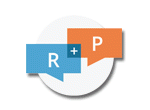How Can I Get My Students to Learn Science by Productively Talking with Each Other?

- Teachers should routinely support students in “sense-making” talk to help them work through their understanding while engaging in the science and engineering practices.
- District staff and PD providers should provide models of productive talk in PD and as an integral part of enacting curriculum materials.
- School leaders should observe productive science talk in classrooms and provide support to teachers as they develop talk facilitation skills.
What is the Issue?
- Talking is integral to human learning. The science and engineering practices described in the NRC Framework for K-12 Science Education highlight that scientists and engineers routinely communicate through talk—not merely to share their final form products—but to make sense of their work and to gather feedback and refine their ideas as the work unfolds. Learners benefit from such accountable talk as well, but it can be tricky to scaffold and manage productive discourse in the classroom.
Authors:
RICH BACOLOR, TAMMY COOK-ENDRES, TIFFANY LEE & ANNIE ALLEN
Reflection Questions
- What do you think productive classroom talk looks like? What is your role in supporting that talk at different phases of student investigations?
- What explicit and implicit social norms are at play in your classroom, and how can you effectively shift these to support productive talk?
- What cultural styles of talk and sensemaking are present in your community of students that you should make room for in science learning conversations?
Things to Consider
- The science and engineering practices in the NRC Framework are deeply social and require that students communicate. They involve reasoning with others and seeking a shared understanding of science phenomena. The goals of productive talk include: (1) sharing and clarifying one’s own thinking, (2) listening to one another, (3) deepening one’s own reasoning, and (4) thinking together.
- Talk makes student thinking explicit and public—so that it can be engaged with, interpreted, built upon, and refined. Student ideas can then become resources for learning.
- I-R-E (initiation, response, evaluation) is the dominant discourse pattern of classroom interactions, and it needs to change. In order to engage students in science and engineering practices, they need access to and experience with discourse-rich sensemaking conversations. Breaking the I-R-E pattern and integrating productive talk may require practice, preteaching, and scripting student roles and language. (STEM Teaching Tools #35 and #48 may be helpful.)
- Students should be supported to make sense of complex natural phenomena. Rich discourse among students should be encouraged through thoughtful lesson sequences and skilled facilitation that position them as collaborative constructors of knowledge.
"In order to process, make sense of, and learn from their ideas, observations, and experiences, students must talk about them... Talk forces students to think about and articulate their ideas. Talk can also provide an impetus for students to reflect on what they do—and do not—understand."
"We suggest that trying to present science [communication] in a culturally neutral way is like trying to paint a picture without taking a perspective."
Attending to Equity
- Broadening participation—beyond the youth who raise their hands in classroom discussions—is an important equity issue. At the same time, different students have different levels of comfort participating, and there need to be many ways to participate in reasoning together. Sometimes silence and listening are fine. It is also crucial to support the involvement of English learners.
- Scientific talk is deeply cultural. Children’s home experience with discourse is quite varied. Classroom norms should support talk, help students use their home discourse practices in the classroom, and provide a safe place for sharing and refining ideas.
Recommended Actions You Can Take
Routinely focus instruction on student talk related to making sense of phenomena and their ideas. Read about making thinking visible through talk and argument, including how to establish classroom norms and use talk moves to cultivate learning conversations. Review the Talk Science Primer and use the Talk Move Checklist.
These classroom videos and supporting discourse primer highlight the use of different talk moves. Learn more about different approaches to managing classroom talk.
ALSO SEE STEM TEACHING TOOLS
- #17 Beyond Written C-E-R
- #35 Talk Activities Flowchart
- #47 Equitable Argumentation
- #48 Guiding Student Conversation
STEM Teaching Tools content copyright 2014-22 UW Institute for Science + Math Education. All rights reserved.
This site is primarily funded by the National Science Foundation (NSF) through Award #1920249 (previously through Awards #1238253 and #1854059). Opinions expressed are not those of any funding agency.
Work is licensed under a Creative Commons Attribution-ShareAlike 4.0 Unported License. Others may adapt with attribution. Funded by the National Science Foundation (NSF). Opinions expressed are not those of any funding agency.


 Email Feedback
Email Feedback


